Stop Sticks vs Spike Strips : A comprehensive comparison
04/24/2025
"Stop sticks" and "spike strips" are terms often used interchangeably, referring to tire deflation devices. However, subtle differences exist in their application and perceived use. Both are designed to puncture vehicle tires, causing deflation and slowing or stopping vehicles like cars or trucks during a police chase.
Understanding Stop Sticks and Spike Strips
What are Stop Sticks ?
Often, "stop sticks" are associated with devices designed for controlled tire deflation. These devices typically feature hollow prongs allowing air to escape at a regulated rate, reducing the risk of sudden tire blowouts and loss of vehicle control. They are mobile, lightweight, and deployed by police officers in front of fleeing vehicles, making them effective for pursuit termination.
They are very light (less than 1 kg) and can be launched quickly and easily by the officer.
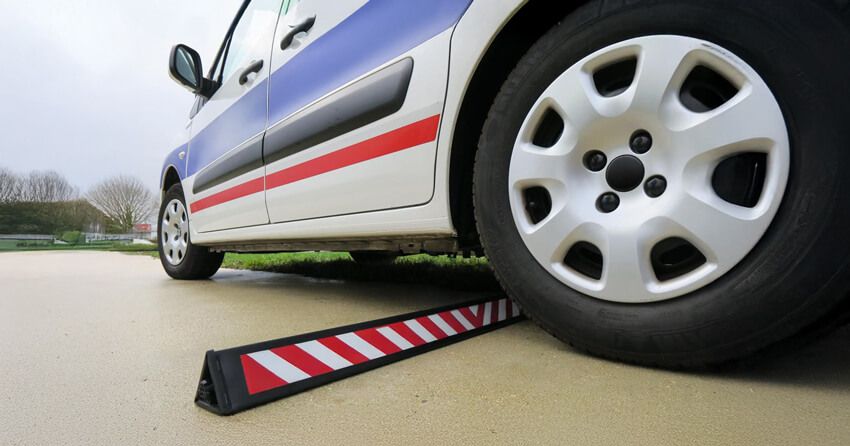
What are Spike Strips?
Spike strips are another type of tire deflation device, commonly used by law enforcement squads. Unlike stop sticks, traditional spike strips often feature rigid metal stinger spikes that puncture and rapidly deflate tires. They can be fixed or portable. Their primary function is to prevent unauthorized access or stop vehicles forcefully. Some models are manually deployed, while others can be remotely activated for safer operation. Shark Robotics has developed Shark Spike, a state-of-the-art remote-controlled spike strip designed for enhanced efficiency and operator safety. With its innovative features and robust construction, Shark Spike offers superior performance in tire deflation device technology, minimizing risks for both law enforcement personnel and the public.
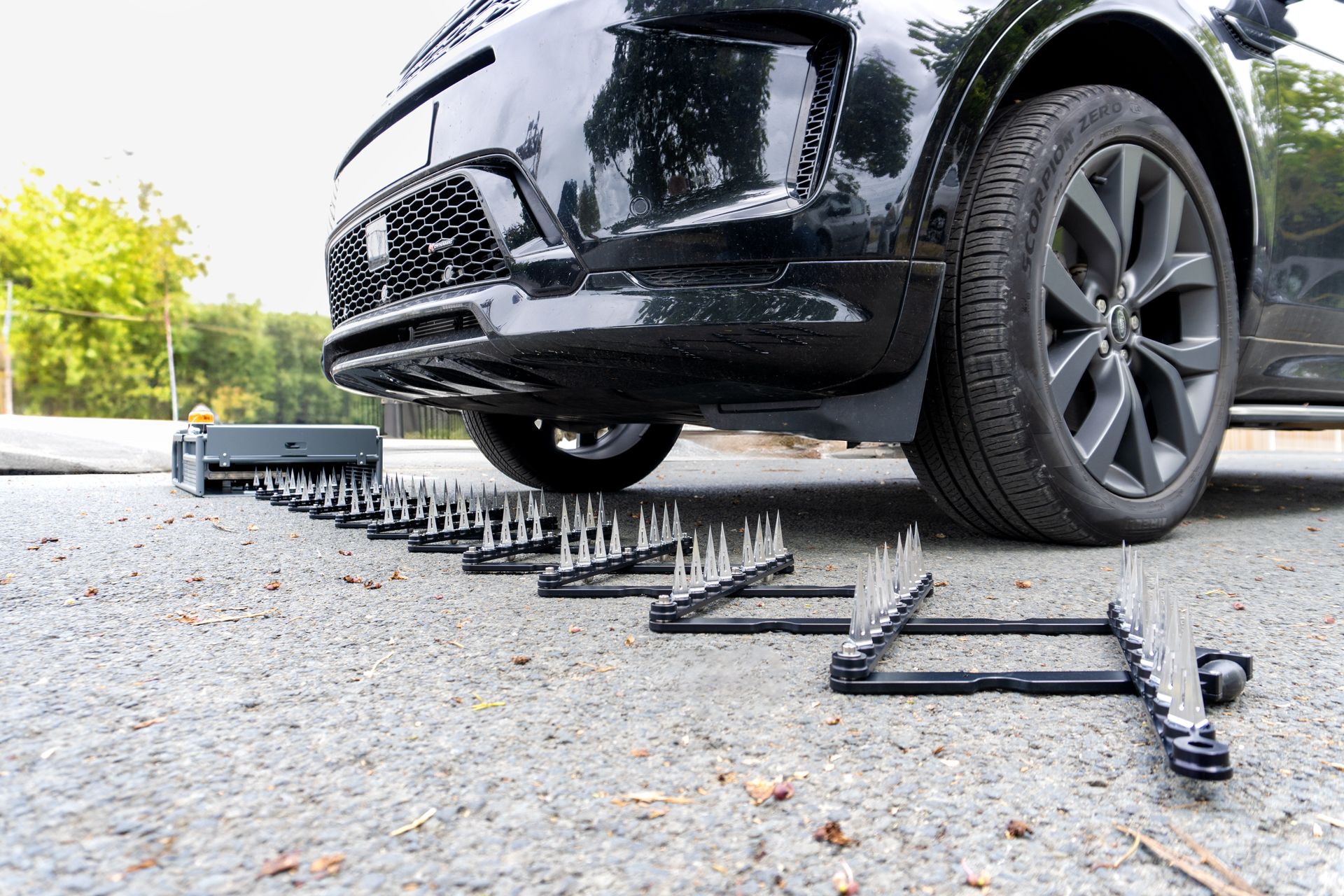
Stop Sticks vs Spike Strips
Deployment Ease
Deploying stop sticks is relatively easy and quick, as they are typically lightweight and can be thrown across the road manually. However, this requires proximity to the target vehicle, creating danger for the police officer. Proper training is essential. Traditional spike strips, depending on the model, may be bulkier like the fixed ones, but portable options exist. Remote deployment enhances safety.
Effectiveness
The success rate of stop sticks and spike strips varies based on factors such as vehicle speed, tire type, and deployment accuracy. Stop sticks allow for gradual deflation, whereas spike strips may cause faster deflation but pose a higher risk of abrupt vehicle destabilization.
Safety
Stop Sticks are generally considered safer for drivers as they promote gradual deflation. However, in case of chase it creates way more danger for the police officers both the users (close enough) and the police car in the pursuit. The stop stick should be quickly both deployed and retract in a very tactical way to assure the car struck is the suspect vehicle.
Traditional Spike Strips, depending on their design, can lead to rapid loss of control, increasing the risk of accidents.
The main difference with the Shark Robotics tire deflation device lies in the alliance of officer safety, and protection of public. Remote-controlled solutions like Shark Spike significantly enhance operator safety by allowing deployment from a secure distance. The patended prong releasing the right amount thanks to the hollow make the use more effective.
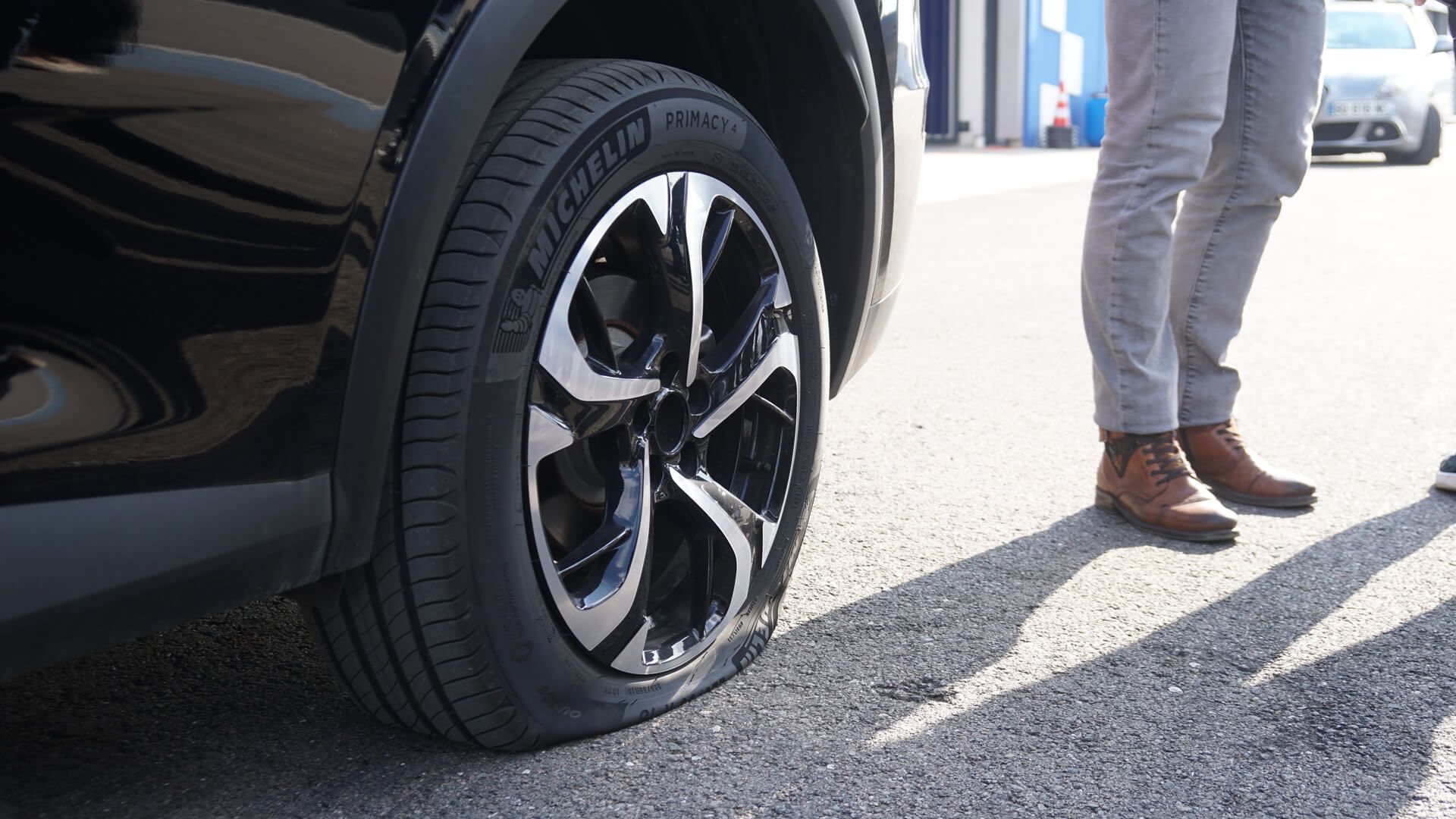
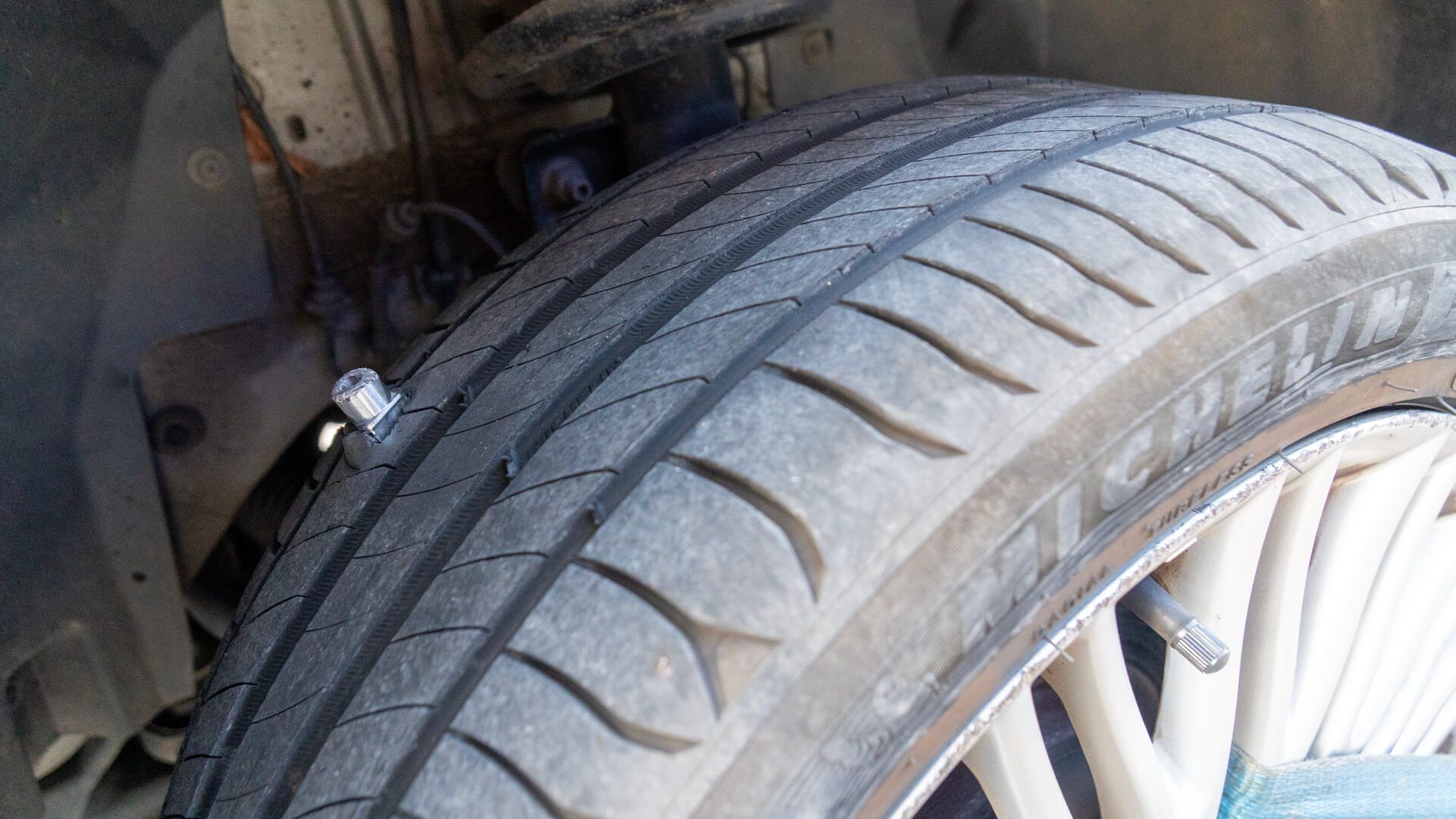
Durability
Stop sticks are often designed for limited use, with spikes needing replacement after deployment. Spike strips, particularly those with metal components, tend to be more durable but may require maintenance due to environmental wear. Cost-efficiency depends on usage frequency and replacement expenses. The full electrical system of the Shark Spike has a battery life up to 7 days or 400 cycles making it a reliable ally for users. Damaged sprong can be switched easely in 30
Summary table
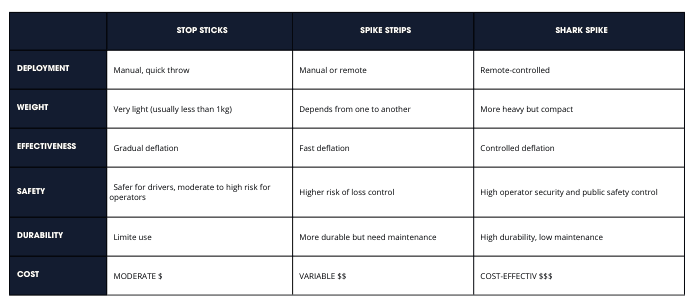
FAQ
How to deploy stop sticks safely?
To deploy stop sticks safely, police officers should position themselves in a secure location away from oncoming traffic. The device should be thrown across the road only when the target vehicle is approaching and then quickly retracted to avoid damage to unintended vehicles.
What is the cost of stop sticks?
The cost of stop sticks varies depending on the manufacturer and model. Basic units may cost a few hundred dollars, while advanced versions with replacement components can be more expensive.
Are spike strips dangerous?
Spike Strips can be dangerous if not used correctly. Traditional designs may cause sudden tire deflation, leading to potential vehicle loss of control. However, advanced models like Shark Spike incorporate safety mechanisms to minimize these risks, ensuring controlled vehicle stops and enhanced operator security.
Contact our communications team
